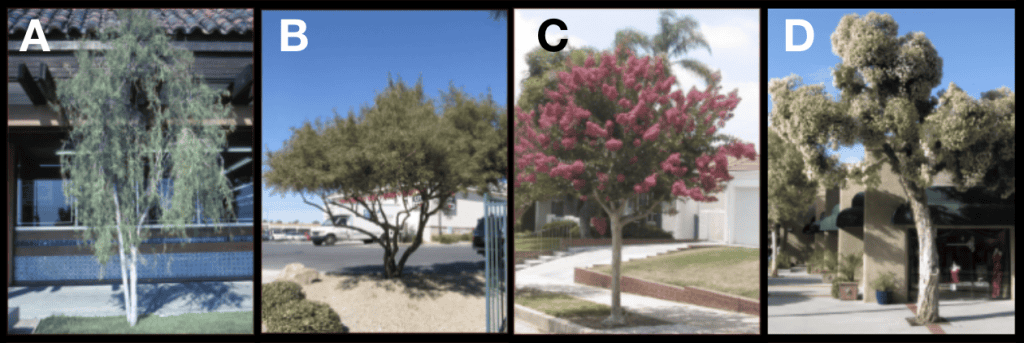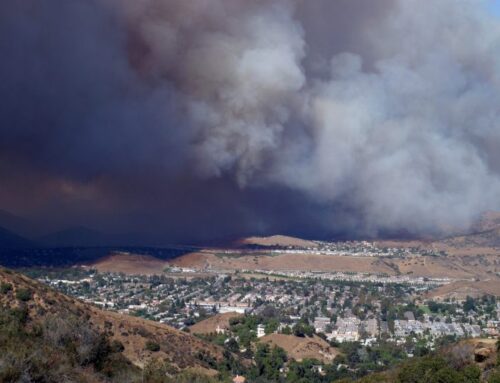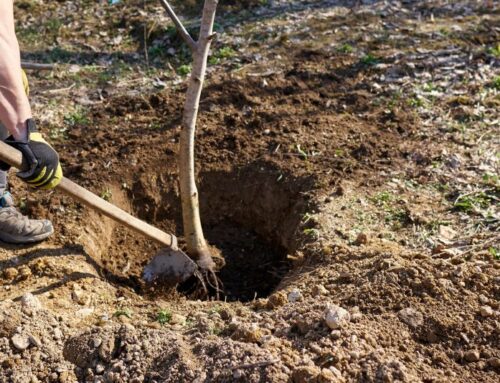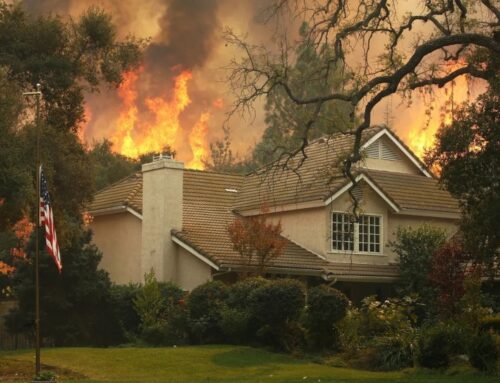What are Invasive, Polyphagous, and Kuroshio Shothole Borers?
Invasive shothole borers (ISHB) are a type of beetle that attacks trees and spreads Fusarium Dieback, a fungal disease. ISHB is an umbrella term for two closely related species of invasive beetles, the Polyphagous shothole borer (PSHB) and the Kuroshio shothole borer (KSHB). The two species are morphologically very similar and require DNA analysis to identify down to the species level. Regardless of which species you have, the signs, symptoms, and damages to the tree are the same.
The ISHB beetle was first identified in Southern California in 2003 and began being notable in 2010 when it was presumed to be the cause of tree decline in Long Beach, California on Box elder trees (Acer negundo). Since then, they have invaded a wide variety of other tree species and killed them at an alarming rate. ISHB is now found in the following counties: Los Angeles, Orange, Riverside, San Bernardino, San Diego, San Luis Obispo, Santa Barbara, Santa Clara, and Ventura. For an updated map on ISHB sightings, visit the UC Cooperative Extension’s PSHB website.
Why are Invasive Shothole Borers Bad?
The ISHB bores into the tree and then infects it with a fungus, which eventually kills the tree in as short as 3 months. ISHB falls under a class of beetles known as ambrosia beetles. Ambrosia beetles carry fungal spores with them as they fly from tree to tree. When tunneling into a new host tree, they “plant” the fungus in the tree and use the fungus as a food source to sustain themselves and their young. The combination of beetle galleries and fungal growth work together to weaken and kill the tree.
Below a summary of the ISHB:
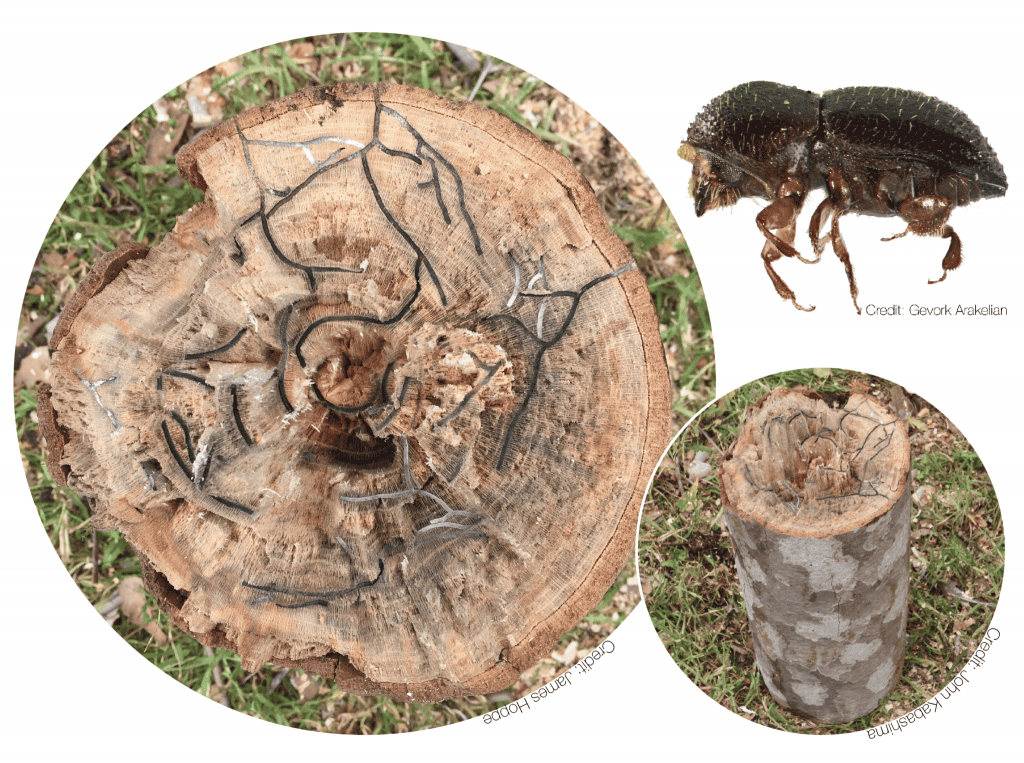
Profile
Insect Type: Boring Beetle
Origin: Southeast Asia
First U.S. Sighting: In Southern California in 2003
ISHB Biology
-
-
- Carries fungal pathogen on their mouth
- Pathogen enters host tree with beetle
- Males cannot fly and remain in tree for reproduction
- Females exit tree to locate nearby suitable host, maximum reproductive flight is February through April
- Beetle entry and exit holes can be found on tree and near the symptoms
- Feeds on resources within tree until those resources are exhausted or when population within tree becomes to competitive
- No native predator/parasite for control/suppression
-
ISHB Symptoms
Initial response: die back of small twigs, round entrance/exit holes on trunk and branches
Secondary: larger branches may die and/or become unstable. Entire bench failures have been reported
ISHB Outcomes
1) No infection—reason for repellency is not clear
2) Beetle attacks tree but does not reproduce:
-
-
- May lead to water stress and potential decline, secondary insect/pathogen attack, twig dieback.
- May lead to water stress and potential decline, secondary insect/pathogen attack, twig dieback.
-
3) Beetle attacks, inoculates with fungi successfully and reproduces with beetle/fungi complex
-
-
- Response vary from outright death, large branch decline/death, minor twig die-
back. - Deterioration of wood from (possibly) second decay organism may destabilize
wood leading to whole branch/tree failure.
- Response vary from outright death, large branch decline/death, minor twig die-
-
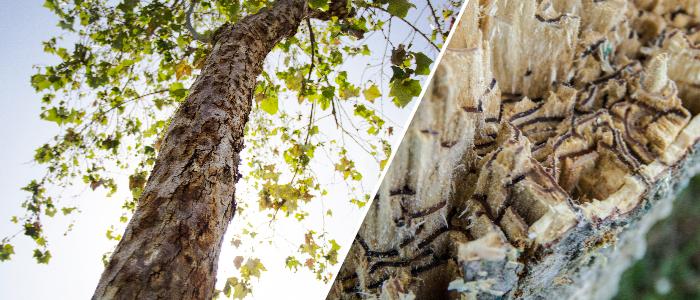
What is a reproductive host tree?
A tree where fungi successfully develop within that host tree. When this fungi is suitable for growing, the female beetle remains in the tree and reproduces (up to 6 generations = up to 64M insects).
Which trees are susceptible?
More than 200 tree species have been sighted with infestations of ISHB. Here are the most common ones:
California Natives: Bigleaf Maple, Black Cottonwood, Box Elder, CA Sycamore, Fremont Cottonwood, Red Willow
Non-Native Ornamentals and Fruit Trees: Avocado, Black Poplar, English Oak, London Plane, Mexican Sycamore
How do you treat for Invasive Shothole Borers?
Preventative Treatment:
- Bacillus subtilis bark spray
- Bifenthrin bark spray
Treatment for Confirmed ISHB Infestations:
- Imidacloprid soil drench
- Emamectin benzoate trunk injection
- Propiconazole trunk injection
What else can you do to protect your trees?
- Soil moisture and healthy growing conditions are necessary for uptake of treatments.
- When pruning trees, use hand saws when possible and sterilize between cuts to prevent spreading the pathogen.
- When removing infested trees, grind and remove the stump and surface anchor roots.
- Do not transport infested logs or sell as firewood.
- Chip all infested materials to a 1.0”, which will kill 99% of beetles.
- All wood waste must be chipped properly, disposed of at a waste facility, or solarized to kill any remaining beetles.
- Monitor, monitor, monitor! Early action is essential. Use a tree inventory, such as ArborPlus, to keep track of treatments and tree health conditions.
Tree Replacement Recommendations
Sometimes, ISHB infestations are too severe to save your tree. In that instance, it’s best to remove the tree to prevent a hazardous, dead tree from failing on your property and prevent further spread of the invasive beetle. When looking for replacement trees, opt for a species less likely to succumb to ISHB. Here are some options:
A. Dessert Willow Pittosporum, Pittosporum phillyraeoides
B. African Sumac, Rhus lancea
C. Crepe Myrtle, Lagerstroemia
D. Flaxseed Paperbark, Melaleuca linariifolia
